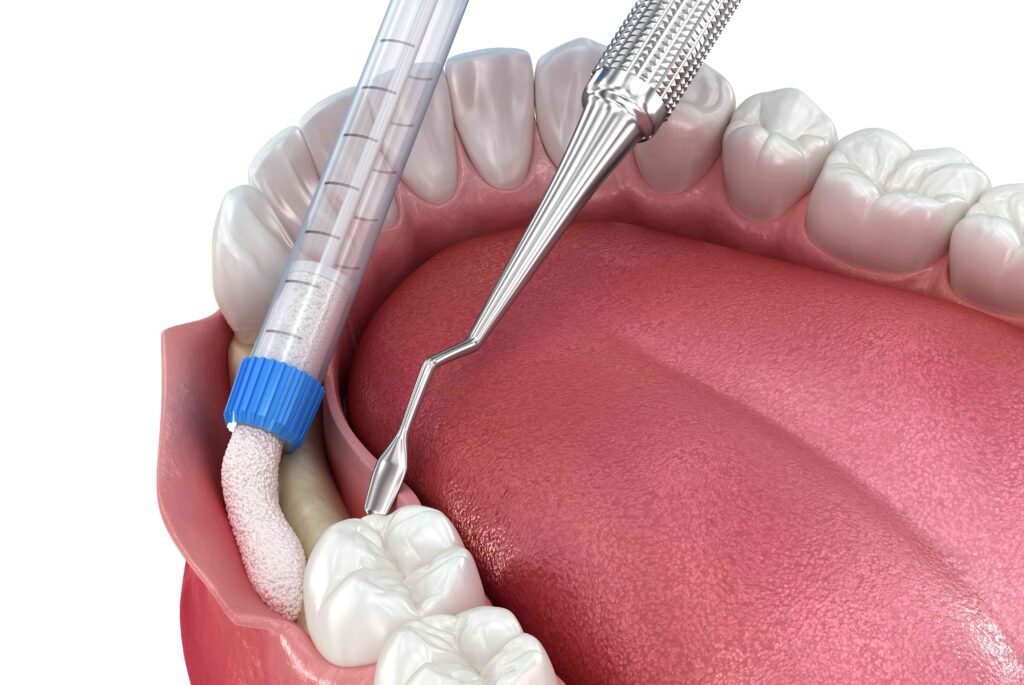
Dental implants are the best tooth replacement option out there. They replace the roots of the missing teeth, so they allow for a wide range of additional benefits that you can’t get with dentures or dental bridges. To be a candidate for dental implants, some patients need preliminary procedures, like bone grafting, to prepare their mouth to support dental implants. Continue reading to learn more about bone grafting and why it is sometimes necessary.
How Does Tooth Loss Affect Bone Loss?
The root of the tooth stimulates the surrounding area of the jaw when you chew. This helps to keep the bone strong and healthy. However, when you lose a tooth, the jawbone is no longer being stimulated in this area. Over time, the bone tissue will be reabsorbed by the body. As time goes on, the more the bone deteriorates. This can cause difficulties when it comes to eating and speaking. It can even affect the alignment of your surrounding teeth.
What Does Bone Grafting Look Like?
A bone graft works by transplanting bone tissue into your jaw. This bone can come from another part of the mouth, a different location of the body, or an animal donor. Sometimes, synthetic material can be used. Once this new piece of bone is placed in the correct area, it seals itself to the old bone tissue in the area that needs more tissue. This is a relatively minor procedure, and most patients who receive bone graft report that their procedure was pain-free.
Why Do You Need Bone Grafting?
Needing bone grafting before dental implants is common. This technique is required if a patient doesn’t have enough healthy bone tissue in their mouth that can support dental implants. Much of the time, this is due to previous tooth loss, but it can also be caused by developmental defects, gum disease, and facial injuries.
What Happens After a Bone Graft?
After your bone grafting procedure, your dentist will prescribe you with antibiotics to prevent infection. If needed, you may also be given pain medication for the recovery period, but many patients are able to do well afterward with just antibiotics. After the bone graft has fused with the natural bone tissue in your mouth, your dentist will be able to place your implants. Depending on your unique case, this could take anywhere from three months to a year.
During your consultation with your dentist, they will examine your smile to see if bone grafting is right for you. This way, you can be better prepared to receive your replacement teeth. You will be showing off a complete smile in just a matter of time!
About the Practice
At D&G Dental of West Orange, we have a team of skilled dentists serving patients in the West Orange community. With their combined experience and expertise, patients can get pretty much anything they need under one roof. We offer start-to-finish dental implant treatment, including necessary bone grafting procedures, at our practice. To learn more about bone grafting or to schedule a consultation, visit our website or call (973) 731-2200.

